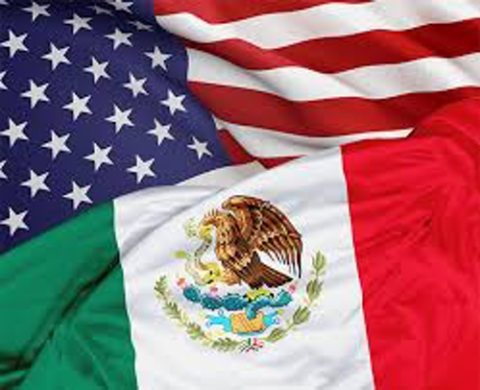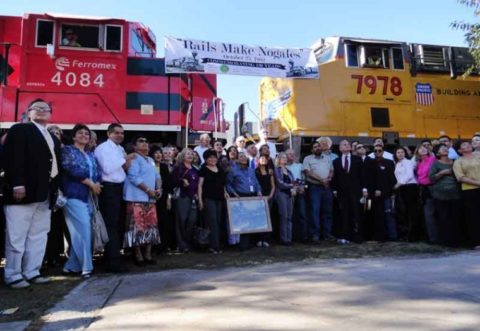Part III of “Tucson after the Coronavirus“
First, let me add a link that I found after posting Part II earlier this week:
Tucson Ranks #1 in U.S. in Google Search for “Homes for Sale” Since COVID-19
I suspect some of those Google searches are from professionals beginning to explore the Pandemic Diaspora. There will be more of them.

Onwards with Part III. There are all sorts of claims, counterclaims, and accusations about the origin of the SARS-CoV-2 coronavirus that causes COVID-19 disease. I’m not qualified to have an opinion, and, at this point, the truth is mired in both domestic and international politics. For my purposes, it doesn’t matter. The virus first came to widespread attention in Wuhan, China. China began restricting travel from Wuhan on 23 January, followed by President Trump’s travel restrictions on travellers from China on 31 January.
As the magnitude of the crisis dawned on U.S. business and political leaders throughout February and March, the Chinese shutdowns plus travel restrictions began to highlight how many of our supply chains have shifted to China. Even in industries like pharmaceuticals that intuitively “should” be built on domestic sources, it turns out that substantial percentages of feedstocks, precursor chemicals, and finished drugs spend at least part of their time in China.
This isn’t a new message. For over a decade, strategists like Peter W. Singer have been warning of America’s dangerous dependencies on Chinese production facilities, even for military equipment.
Link: Peter W. Singer on Ghost Fleet, China, and Strategy
More recently, Chinese activities at U.S. universities have received greater scrutiny, even leading to criminal prosecutions of professors as prominent as the Chair of Chemistry and Chemical Biology at Harvard.
Link: Confucius Institute at University of Arizona closing
Link: China’s Funding of U.S. Researchers Raises Red Flags
But now, the emerging pandemic forced Americans to look at our dependencies on China for items as basic as ibuprofen or as life-critical as ventilators. To quote Rosemary Gibson, “If China shut the door on exports of core components to make our medicines, within months our pharmacy shelves would become bare and our health care system would cease to function.”
Link: Coronavirus Spurs U.S. Efforts to End China’s Chokehold on Drugs
Link: U.S., EU Are Far Apart on Reshoring Making of Medical Gear
Some of this is reminiscent of the panic over “The Japan that Can Say No” in the 1980s. Clearly, Japan didn’t become the next global superpower. But China is far larger, with far more resources, and a much more ruthless leadership. The four most dangerous words in the English language are “It’s different this time.” But, sometimes, those words are true.
The escape of the virus from Wuhan is not a “Pearl Harbor” event. But I do believe that, in retrospect, it will be seen as a catalyzing moment for U.S. industry to reassess its focus on China’s immense domestic market and economies of scale. Senior executives — or, at least, their shareholders and regulators — are going to start asking questions like “Is this really a good idea? Are a couple of points of gross margin really worth outsourcing our future to a country that may not always be our friend?”
Link: Senate Passes Bill to Delist Chinese Companies From Exchanges
Link: Push For Supply Chain Resilience, Reshoring
What does all this mean for Tucson?
Arizona is already an attractive destination for high-tech manufacturing, as highlighted by TSMC’s recent decision to build a new $12 billion chip fabrication plant in the state.
Link: Taiwan chip maker TSMC’s $12 billion Arizona factory could give the US an edge in manufacturing
We have a lot of the right elements. Talented workforce. Experience with high-tech manufacturing and all the necessary support infrastructure (thanks, Raytheon!). Business-friendly state laws, and a city and county that appear to be more business-friendly than in previous decades. Competitive incentive packages.
But there are a lot of places in the United States that can claim all of those things. What does Tucson have that is (almost) unique?

Mexico.
I always amaze my friends back East when I tell them that Tucson is closer to Mexico than it is to Phoenix.
Tucsonans know this, but I have blog readers all over the country: If your mental narrative of Mexico is shaped by stories of drug wars and corruption, it’s woefully incomplete. And if your mental narrative of Mexican workers includes words like “lazy” and “mañana,” then it’s just wrong.
Mexico is a country of 128 million people… about the population of the United States when we entered World War II. (And our manufacturing did okay there.) They have excellent universities and technical colleges, graduating a bright young workforce ready to excel in demanding manufacturing careers.
Our neighbors in Sonora are recognized as the new hub for aerospace manufacturing in Mexico, building sophisticated equipment for Airbus, Honeywell, and GE Aviation. I’ve had the privilege of touring the BF&S facilities in Agua Prieta. It’s as clean, well-managed, and productive as any facility in Shenzhen or Shanghai. The workers know their jobs, and are proud of what they’re doing.
Link: The Location Guide to Manufacturing in Mexico: Hermosillo, Sonora
And with the passage of the USMCA (replacing NAFTA), cross-border investment and trade with Mexico is more important than ever.
Moving supply chains out of China isn’t going to happen quickly, and it isn’t going to be cheap.
Link: The US and China Want a Divorce, but Neither Can Afford One
As companies start looking at the challenges of moving production out of China, every country in Asia is waving their hands, saying “pick me, pick me!”
Link: New Data Shows U.S. Companies Are Definitely Leaving China
But, after decades of hearing MBAs preach the virtues of “offshoring,” you’re now hearing a lot of chatter about “nearshoring” and “reshoring.”
Brief definition: “reshoring” means bringing manufacturing all the way back to the U.S., with all of the labor costs, regulatory issues, and other complexities of 21st century America. “Nearshoring” is a compromise… bringing manufacturing back to the Western hemisphere. You’ll typically get costs cheaper than the U.S., but not as cheap as Asia. Cultural barriers higher than a domestic plant, but much lower than Asia. Transportation costs, IP risks, etcetera… nearshoring can be the “Goldilocks” solution to the USA vs. China dilemma.
Given the dynamic growth of Mexico and the increasingly impenetrable web of regulations in the U.S., I believe that nearshoring of many production supply chains to Mexico is inevitable. If you’re a corporate executive looking at this once-in-a-career decision, does it make sense to pick another Asian country separated from the U.S. by culture, challenging language difficulties, a dozen timezones, and the world’s largest ocean? Or should you pick an economically-competitive destination with an increasingly shared culture, growing bilingualism, an adjacent time zone, and direct rail access to U.S. markets?
And it just so happens that the rail line runs through Tucson.

There are other rail connections, of course. San Diego-Tijuana has issues (not the least of which being that the U.S. connection is in California.) El Paso and Ciudad Juárez have active cross-border freight traffic, and will be a strong competitor for Arizona. But the twin cities of Nogales are built around cross-border traffic… and are halfway between Sonora’s burgeoning high-tech manufacturing hub in Hermosillo, and the brainpower of the University of Arizona.
If Tucson can’t figure out how to capitalize on the pandemic-triggered nearshoring megatrend by making it easy for companies to do business on both sides of the Arizona/Sonora border… then shame on us. I think we can do it.
Part IV: Tucson and the U.S. Space Force
Coronavirus image credit: FDA
Flags image credit: Ken Bosma
Railroad image credit: Jonathan Clark
[…] about how Tucson will recover from the pandemic, and we’ve already looked at academia and manufacturing. What about the other pillar of our community, the […]